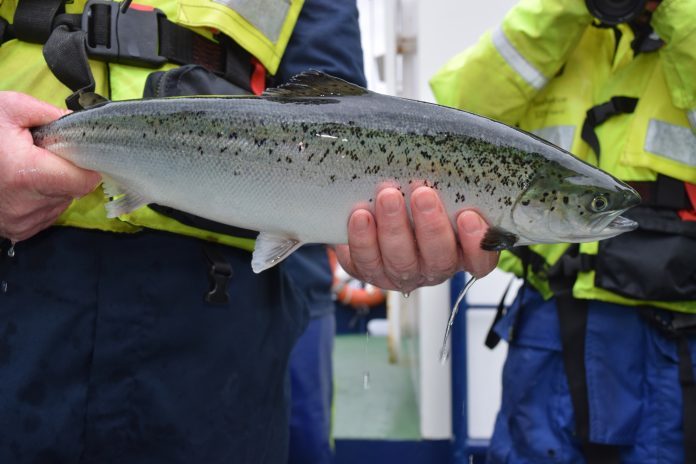SAIC funds new in-feed sea lice vaccine project to tackle scourge of salmon farmers – which are are becoming increasingly resistant to treatment. BioMar, nanoparticle company SiSaf and experts in vaccinology Tethys Aquaculture are all onboard.
A team of Scottish and international aquaculture experts is developing a pioneering oral vaccine for sea lice, helping the industry to tackle one of the biggest threats to the health and welfare of farmed Atlantic salmon, writes the the Scottish Aquaculture Innovation Centre in a press release.
The project, supported with funding provided through the Scottish Aquaculture Innovation Centre (SAIC), aims to develop a novel vaccine, which can be delivered through fish feed, following recent advances in the understanding of fish immune systems.
Academics
Project partners include academics from the University of Stirling‘s Institute of Aquaculture as well as industry specialists from feed producer BioMar, nanoparticle company SiSaf and experts in vaccinology, Tethys Aquaculture. The consortium also includes academics from Moredun Research Institute and fish immunologists from the University of Maine in the United States.
“The new approach to oral vaccination will deliver the vaccine via specially developed feeds that aim to improve fish resistance to parasites using advanced nanoparticle technology. Innovative bio-engineering tools will also target sea lice by triggering strong immune responses in the skin of fish, rather than delivering it through the bloodstream alone. Sharing approaches employed to control ticks in agriculture, the new vaccine aims to directly target the proteins important for the parasite’s survival,” wrote the SAIC.
Eco-friendly tool
Dr Sean Monaghan from the Institute of Aquaculture at the University of Stirling, said: “Reducing the impact of sea lice is a major concern for salmon producers around the globe and we are making headway towards finding an effective method for vaccinating fish against this parasite. There is strong evidence to support the use of an oral vaccination approach, using nanoparticles in feed for vaccine delivery in order to trigger the desired antibody response.
“Despite the range of treatment and management tools already in use, sea lice remain a challenge to the industry and increased parasite resistance to drug treatment is reducing the effectiveness of these methods. Development of a vaccine would represent a significant advance in sea lice control, providing a practical, eco-friendly tool for use in an integrated sea lice control strategy.”

Farmed Fish Health Framework
In October, SAIC said it was looking into early warning systems that aims to get to the heart of the salmon disease, CMS. This was also part of the 10-year Farmed Fish Health Framework.
Polly Douglas, aquaculture innovation manager at SAIC, added: “Addressing environmental and health challenges, including sea lice, is one of SAIC’s priority innovation areas and a crucial concern for the global aquaculture industry. The work of this project correlates directly with the Scottish Government’s 10-year Farmed Fish Health Framework, aiming to improve fish health, protect the marine environment, and ensure Scotland’s main food export grows sustainably.
“Collaborative research and development projects, such as this, harness the expertise of academia, industry partners and salmon produers, and can play a major role in future sustainability of the industry.”

